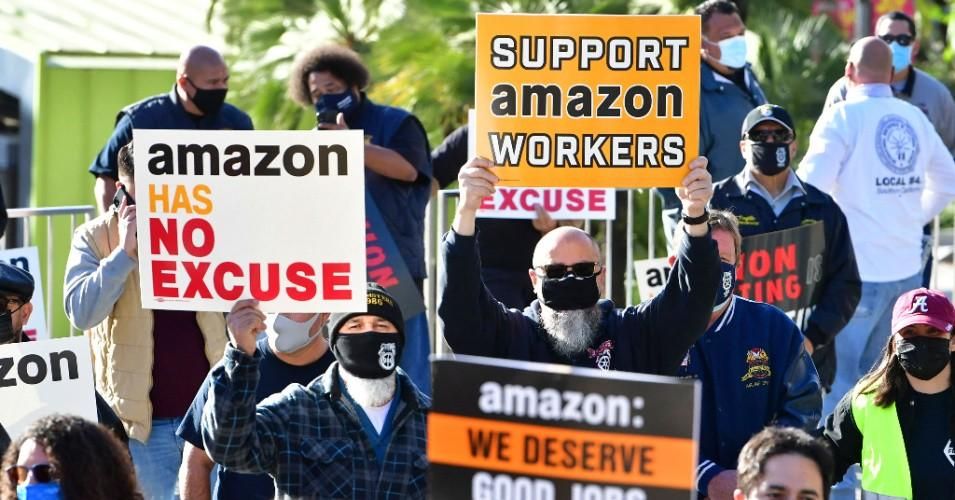
After Recode on Friday revealed an internal document from last year warns that "if we continue business as usual, Amazon will deplete the available labor supply in the U.S. network by 2024," critics of the online retail giant's labor practices renewed calls for improvement.
"I guess treating people like they're expendable has consequences, who knew?"
Journalist Jason Del Rey's reporting on the "looming labor crisis" comes as the company is under fire for battling its workers' organizing efforts, including the historic victory of the Amazon Labor Union at a Staten Island facility earlier this year.
"This is crazy. Amazon burns through workers so fast there might be none left soon," tweeted New York City organizer and writer Joshua Potash, adding that he "can't imagine how anyone defends a system that treats people like expendable parts like this."
Retired journalist Laura Keeney said that "if you need to better understand how Amazon burns through workers, here you go. I guess treating people like they're expendable has consequences, who knew?"
California Labor Federation's Lorena Gonzalez Fletcher told Amazon that "maybe it's time to improve working conditions and allow your workers to unionize."
"It turns out that low wages and unsafe working conditions are [Amazon's] biggest labor problem, not unions," declared Doug Bloch, political director for Teamsters Joint Council 7. "Gee, aren't those the problems that workers join together in unions to fix?"
Longtime labor reporter Steven Greenhouse similarly suggested that "IF AMAZON LETS ITS WAREHOUSES UNIONIZE, they could become far less grueling places to work and worker turnover could decline greatly."
Pointing out that "workers have long warned Amazon that its 'churn and burn' would cause the company to 'run out of workers,'" Jobs with Justice also said that "maybe if Amazon stopped fighting workers organizing unions, they could build a safer, healthier workplace and this would be less of a problem."
According to Del Rey—who noted that an Amazon spokesperson didn't deny the report's findings but declined to comment—the company "was expected to exhaust its entire available labor pool in the Phoenix, Arizona, metro area by the end of 2021, and in the Inland Empire region of California, roughly 60 miles east of Los Angeles, by the end of 2022."
"The internal research also identified the regions surrounding Memphis, Tennessee, and Wilmington, Delaware, as areas where Amazon was on the cusp of exhausting local warehouse labor availability," he continued, highlighting the accuracy of the company's models for staffing shortages ahead of Amazon Prime Day shopping event in June 2021.
Amazon's own data shows that its attrition rate was 123% in 2019 and 159% in 2020, which are high figures compared with the federal government's estimates for those two years in the U.S. transportation and warehouse sectors (46% and 59%) and retail (58% and 70%).
The document "provides a rare glimpse into the staffing challenges" faced by a company whose employees "have long complained of stresses unique to Amazon's workplace, from the pace and repetition of the labor to the unrelenting computerized surveillance of workers' every move to comparatively high injury rates," Del Rey wrote. "The leaked internal findings also serve as a cautionary tale for other employers who seek to emulate the Amazon Way of management."
The journalist asserted that the report "reads like an attempted wake-up call" and outlined the projected impacts of some solutions it offers, including raising wages, changing termination or retention policies, improving the hiring process, choosing new warehouse locations in areas with significant labor pools, and increasing automation.
Noting that Amazon's new CEO, Andy Jassy, has claimed the company is "not close to being done in how we improve the lives of our employees," Del Rey concluded that "as the internal report shows, doing so should no longer be optional for Amazon; it's an imperative."
This content originally appeared on Common Dreams - Breaking News & Views for the Progressive Community and was authored by Jessica Corbett.